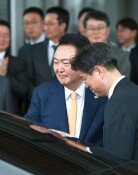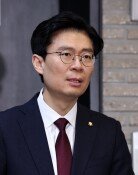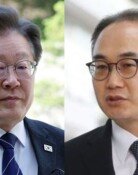N. Korea seeks to strengthen ‘strategic stature’ through nuclear weapons
N. Korea seeks to strengthen ‘strategic stature’ through nuclear weapons
Posted December. 30, 2019 08:06,
Updated December. 30, 2019 08:06

With the imminent release of North Korean leader Kim Jong Un’s New Year’s Day speech that will determine the course of the Korean Peninsula in the new year, the North has announced that the decision on its new way has entered the final phase, by mentioning “historic transformation.” “The immediate orientation of the struggle of the ruling Workers' Party and the state and important policy issues for new victory in our revolution under the present situation were brought up as agendas of the plenary meeting,” the North’s official Korean Central News Agency said Sunday, reporting on the party’s fifth plenary meeting of Stage 7 that was convened on Saturday. As the North announced that the meeting discussed a plan to strengthen “strategic stature,” an expression Pyongyang uses when stressing its stature as “nuclear power,” the Stalinist country has indicated that it could return to the situation before 2018 to start a “standoff of hard-line versus hard-line.”
With only three days left until the year-end deadline that Pyongyang has been insisting, the plenary meeting of the North Korean Workers’ Party took place on Saturday at the party’s headquarters where Chairman Kim’s office is situated. It is the venue where the party held its first plenary meeting in March 2013 in the wake of the opening of the Kim Jong Un era.
Notably, the latest plenary meeting, which was convened unusually for two days, is believed to have been the largest ever in scale. Unlike ordinary plenary meetings that were attended by around 200 people including members of its Politburo, and members and candidate members of the party’s Central Committee, the latest plenary meeting brought together officials from across the nation including chairs of people’s committees from different provinces, and chairs of people’s committees of cities and counties. An analysis of photos released by KCNA suggests that an estimated number of 950 people participated in the meeting.
As such, analysts say that Pyongyang could continue intense provocations after the release of North Korean leader Kim’s New Year’s Day speech. “Chances are high that the North will launch en masse intense provocations that could instantly draw attention from the international community in the New Year when (Pyongyang’s) strategic patience will end,” said a source in the South Korean military. In other words, the North could start provocations in succession from the New Year’s speech as turning point after focusing on strengthening its justification until the year’s end through the rhetoric “we have been patient.”
However, the fact the international community has started collectively urging Pyongyang to return to dialogue is a variable. As China and Russia, countries that North Korea have been striving to rebuild diplomatic ties over the past two years, have sent Pyongyang a message to refrain from taking provocative actions, North Korean leader Kim could feel burden about resuming highly intense provocations. “Since North Korea-China, and North Korea-Russia relations have been restored to some extent, the North is facing a situation where it cannot afford to unconditionally opt for ‘my way,’” said Hong Min, a senior researcher at the Korea Institute for National Unification. Certain watchers in the diplomatic community have constantly raised the possibility that when the North senses that U.S. President Donald Trump has regained strength in domestic politics, Pyongyang could start dialogue to seek “talks for nuclear reduction” rather than “denuclearization.”
Gi-Jae Han record@donga.com · Hyo-Ju Son hjson@donga.com







